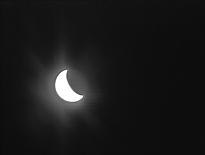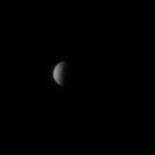Industry filters in planetary astrophotography
Check out the new site at https://rkblog.dev.
8 January 2011
Comments
For industry and scientific use a lot of various filters is being made. For astronomy we have a lot of Baader, Astronomik, Astrodon and other filters, but still some of those "industry" filters can be used in astronomy for advanced imaging. For DS imaging we can dig out narrowband filters for helium, neon or argon. For planetary - various infrared and UV filters.
Industry filters are made by various companies. Edmundoptics makes a lot of them - from simple to advanced bandpass filters. Eureca.de has narrowband filters, and thorlabs.de also has nice set of them. Prices are low for simple Schott/Hoya filters and can rise very high for narrowband filters. I've bought and tested few simple Schott filters from UQG Optics.
Filters are available in various sizes. 25 mm diameter is very close to the 1,25" size standard and can be mounted in filter cells of cheap SkyWatcher/Celestron moon filters:
RG1000
This is a infrared filter that start transmitting at around 1000 nm (50% at 1000 nm). For CCD this is very dim filter as CCD sensitivity is low and ends at around 1100 nm. Main use of RG1000 is to catch Venus night side using the 1010 nm window. It also can be used for imaging bright targets like Moon or Venus - so long infrared wavelengths are much less affected by seeing.

RG850
This is more brighter RG Schott filter. It's a longpass filter that starts transmitting around 850 nm. Compared to RG1000 this filter reaches very high transmission values. Can be used as a replacement for Baader Ir-Pass or Astronomik Pro Planets with latest sensitive CCDs. Compared to ProPlanet 807/742 this filter is also UV blocked. This filter can be good for Moon, Venus, Jupiter, Mars and also partially on dimmer Saturn and other objects. You can use other RG filters from 610 to 1000 to fit your needs.

UG1+BG39
Combining two filters you can get an UV filter that doesn't leak IR and thus is usable in astronomy. BG39 + UG1 combination is used in Schuller UV filter (made for example by Astrodon). It works, but it doesn't offer so good performance as much more expensive UVenus filter. UG1 is an UV filter with an Ir leak. BG39 is a broadband filter that doesn't pass IR. Combining them cuts the IR leak. UG1 scheet:


Silicon Window
This is a polished plate of pure silicon (Si, don't mistake it with silica, quartz, fused silica - SiO2). This "filter" reflects all light untill 1000-1100 nm. It has sharper cutoff point and also starts transmitting at longer wavelengths.


RkBlog
Check out the new site at https://rkblog.dev.
Comment article